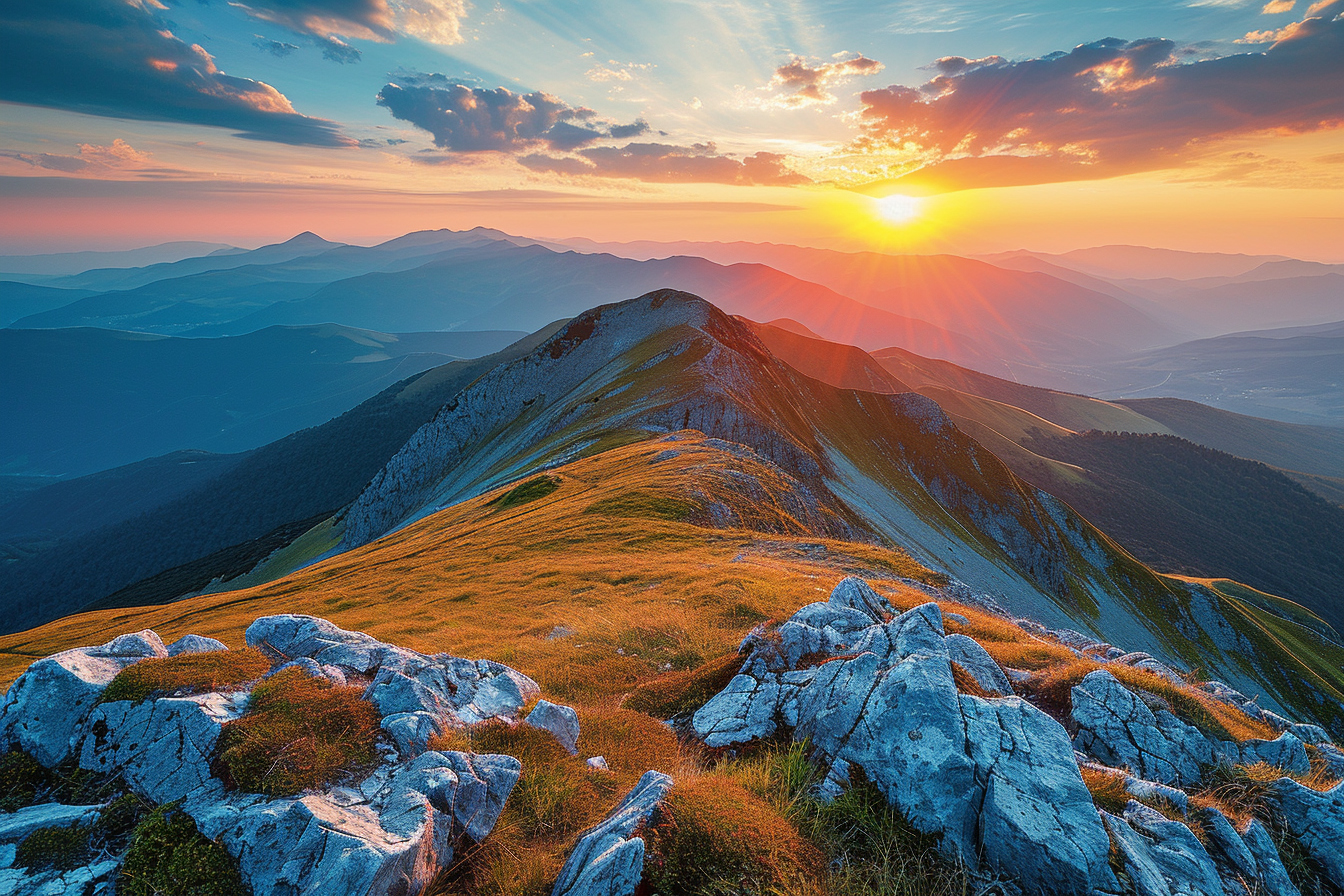
Landscape photography has the power to transport viewers to far-flung places, convey the grandeur of the natural world, and capture the beauty of the environment. A key tool in the arsenal of landscape photographers is the wide-angle lens. With its expansive field of view and unique perspective capabilities, the wide-angle lens can transform a scene into an immersive experience.
Understanding wide-angle lenses
Wide-angle lenses are defined by their short focal lengths, typically less than 35mm on a full-frame camera. Their characteristic feature is the ability to include a vast expanse of the scene in a single frame. This makes them ideal for photographing landscapes where the photographer aims to capture as much of the surroundings as possible.
Advantages of wide-angle lenses
- Expansive Field of View: The broad sweep of landscape can be captured, from the sweeping skies to the minute details in the foreground.
- Sense of Depth: Wide-angle lenses accentuate the sense of space and depth in a photograph, giving the viewer a feeling of being within the scene.
- Distortion Creative Effects: These can be used artistically to give landscapes a new dimension, making elements like trees or rocks appear larger and more imposing.
Harnessing the power of perspective
Wide-angle lenses not only capture more of the scene, but they also dramatically affect the perception of space and distance. When photographers understand how to control this perspective, they can create highly dynamic compositions.
Leading lines and foreground interest
- Leading Lines: The exaggerated perspective can make compositional elements like roads or riverbanks stretch away from the viewer, drawing the eye through the image.
- Foreground Interest: To anchor the frame and enhance the feeling of depth, include interesting features in the foreground, such as rocks, flowers, or patterns in the sand.
Handling distortion
- Lens Distortion: Wide-angle lenses can produce distortion, especially around the edges of the frame. While sometimes desirable, it can lead to unnatural representations of scenes. Keeping the lens level and avoiding tilting it upwards or downwards helps mitigate distortion effects.
Technique is key
- Avoiding Edge Distortion: Compose with care to prevent distortion of trees or buildings on the edges of the frame.
- Keeping Horizon Straight: A level horizon is essential for landscape shots to avoid giving the viewer a sense of imbalance.
Selecting the right wide-angle lens
Not all wide-angle lenses are created equal. Photographers should consider several factors when choosing the right lens for their landscape photography.
Focal length variations
- Ultra-Wide Lenses (14mm – 24mm): Offer maximum field of view but can be challenging to use due to the exaggerated distortion.
- Moderate Wide-Angle Lenses (24mm – 35mm): These provide a natural perspective while still capturing a broad scene.
Lens quality and features
- Sharpness: Look for lenses that maintain clarity and detail across the frame.
- Maximum Aperture: A wide maximum aperture isn’t as critical for landscapes where a deep field of focus is usually desired, but it can be beneficial for low-light conditions.
- Weather Sealing: Given the outdoor nature of landscape photography, durable construction and weather sealing are valuable features.
Composition tips for wide-angle landscape photography
Strong compositions are the foundation of memorable landscape photographs. A wide-angle lens can both enhance and challenge compositional choices.
Rule of thirds
- Balanced Compositions: Positioning the horizon along the top or bottom third line can result in a balanced and harmonious composition.
- Focal Points: Place points of interest at the intersections of these lines to create an engaging and dynamic image.
Incorporating layers
Layers add depth to a landscape photograph. With wide-angle lenses, photographers can emphasize this depth by carefully composing multiple layers in a scene, such as a foreground of wildflowers, a middle ground of rolling hills, and a background of snowy peaks.
Mastering exposure
With the vast dynamic range often present in landscapes, especially with the inclusion of sky and land in the same frame, exposure settings are crucial.
Understanding the histogram
- Avoiding Clipped Highlights and Shadows: Use the histogram to ensure that the exposure preserves details in both the shadows and highlights.
Using filters
- Graduated Neutral Density Filters: These can help balance the exposure between a bright sky and a darker landscape.
- Polarizing Filters: A polarizer can intensify the blue of the sky, reduce reflections, and increase color saturation.
The magic of the golden hour
The golden hour—the period shortly after sunrise or before sunset—offers some of the most flattering light for landscapes. A wide-angle lens can leverage this warm, diffused light to create images with rich colors and long, soft shadows that accentuate the contours of the land.
Post-Processing wide-angle shots
With the raw power of wide-angle lenses captured in camera, post-processing can fine-tune these images to perfection.
Correcting lens distortion
- Software Correction: Most photo editing software comes equipped with tools to correct lens distortion, ensuring that lines look straight and true.
Enhancing details and colors
- Sharpness and Clarity: Increase sharpness and clarity to bring out details, especially in the image’s foreground and mid-ground areas.
- Vibrancy and Saturation: Adjusting color settings can help recreate the natural beauty of the landscape as perceived by the human eye.
The journey to mastering landscape photography with a wide-angle lens is one of understanding the equipment, refining technique, and developing a keen eye for composition. The lens is not only a tool but a gateway to a greater appreciation of the natural world and how it can be captured on camera. Experimentation is a pathway to discovery, and each landscape photographer must find their unique perspective—a convergence of vision, skill, and the irreplaceable wide-angle lens.